The U.S. Department of Transportation (DOT) number stamped on the tire’s sidewall contains a date code that identifies the age of your tires. This DOT number (also called the Tire Identification Number or TIN) is contained in a sequence of up to 12 letters and numbers that signify the tire size, the manufacturer, the specific plant where it was built and when it was built. In the event of a recall, tiremakers and the National Highway Traffic Safety Administration use the DOT number to identify which defective tires are in the campaign. The date code used on tires is not a typical representation used for dates and can be easily missed by the untrained eye.
To determine the age of your tires, check the last four digits of the U.S.
Tires built from 2000 to the present use the last four-digits of the DOT number to identify the week and year of manufacture. For example, a DOT number with 4116 at the end of the sequence would mean that the tire was manufactured in the 41st week of 2016, or sometime in the mid-October.
While it is increasingly rare to find a tire made before 2000, these tires use only three digits in the date code for the week and year. A tire with a three-digit date code like 416 means that the tire was made in the 41st week of 1996.
Tire DOT Numbers Include a Date Code
(Source: National Highway Traffic Safety Administration)
Be aware that the complete tire DOT number is not required to be molded on both sides of the tire. While some tire makers include the full DOT number on both sides, the date code on your tires may only be contained on one side. If the DOT number is only eight characters, you’ll need to look on the other side of the tire to find the full number with the date code.
Why is it important to understand your tire’s age? Manufacturers have known for decades that exposure to heat and oxygen weakens rubber over time. Today’s tires are highly engineered products, with anti-aging chemicals mixed in the rubber compounds, along with others to make the rubber softer and more flexible. But, over time, the rubber and component materials within the tire changes and becomes more prone to failure. In most instances this loss of strength is invisible – and the material degradation is present regardless of tread depth and even in tires that have never even been put on a vehicle
Today’s tires are highly engineered products, with anti-aging chemicals mixed in the rubber compounds, along with others to make the rubber softer and more flexible. But, over time, the rubber and component materials within the tire changes and becomes more prone to failure. In most instances this loss of strength is invisible – and the material degradation is present regardless of tread depth and even in tires that have never even been put on a vehicle
Aged tires are more susceptible to catastrophic tread separations, which occurs when the tire’s outer layer separates from the tire body or casing. This type of failure can be much more dangerous for drivers to manage than a flat tire or blow out, particularly in trucks, SUVs and vans – particularly 15-passenger vans – because they are more prone to handling and stability problems.
While tread separations caused by manufacturing defects can occur in new tires, tires older than six years – especially those on vehicles located in hot-weather states such as if such as Arizona or Florida – are more prone to suffer a catastrophic tread separation.
According to the National Highway Traffic Safety Administration “Most vehicle owners can easily overlook tire aging, increasing their risk of a crash.”
Based on research showing that the rate of tire failures increases after six years, nearly all vehicle manufacturers recommend owners replace tires after six years, regardless of tread depth. Most tire manufacturers recommend replacement at 10 years or that owners follow the vehicle manufacturer’s guidelines. Tire makers continue to insist that expiration dates are not necessary, yet, nearly all passenger and light truck tire warranties expire at six years. Some tire retailers have also adopted the tire age recommendations and will not service vehicles with tires that are beyond the manufacturers age recommendation.
Consumers should also check the DOT code when buying new replacement tires. Some retailers will sell a “new” tire that has actually been sitting in their inventory for years. That tire could have been improperly stored in a warehouse or outdoors exposed to high temperatures that reduce a tire’s robustness and useful life.
That tire could have been improperly stored in a warehouse or outdoors exposed to high temperatures that reduce a tire’s robustness and useful life.
Consumers should insist on replacement tires manufactured within months of the purchase date. And, regardless of tread depth, vehicle owners should replace their tires six years and older.
Call us if you believe a defective tire caused your accident. The team at Newsome Melton can review the facts of your case and determine if we believe you have a valid claim for compensation. If we feel you have a strong defective tire case against the manufacturer, we can navigate the claims process on your behalf and potentially recover compensation to pay for your medical bills, lost wages, vehicle repair or replacement, or other losses.
Call us today at 888-221-5316 or contact us through our online chat. We offer free reviews and handle many of these claims on a contingency fee basis. This means we do not recover compensation unless you do.
This means we do not recover compensation unless you do.
Have you ever asked yourself, “how old are my tires?”. If not – you should. Determining your tire age is very important to you and your family’s safety. If you’re driving with a tire over six years old, you could be putting yourself in danger, as tires dry rot with age from the inside out.
“These Tires Have a Few Good Years Left in Them”I used to think, “the tread looks great, no bald or worn out spots, these things could last at least a couple more years”. They may last another three years, but your tread has little to do with it. What is more essential is the age of the tire. Tires are made of rubber, obviously, and when rubber gets old, it starts to dry and crack (often times from the inside out – this process is not always visible to the naked eye).
What’s more important than the thickness of the tread is the date that the tires were manufactured. Until recently, I had no idea that the age of the tire mattered. I thought it was all in the tread and visible cracking. I also had no idea that tires have a manufacture date stamped on them. But the manufacturers don’t make it easy on you to figure this out.
Until recently, I had no idea that the age of the tire mattered. I thought it was all in the tread and visible cracking. I also had no idea that tires have a manufacture date stamped on them. But the manufacturers don’t make it easy on you to figure this out.
It turns out that tires have cryptic codes on them. Believe it or not, you can actually determine your tire’s manufacture date based on these codes.
How to Determine your Tire AgeLet’s discuss post year 2000 tire manufacturing date stamps (if your tire is older than this as indicated by a lack of this standard, you’ll want to have it replaced immediately). Tirerack.com has a great demonstration on how you can determine your tire’s ages:
Tires Manufacture Date After 2000Will My Set of Four Tires All be the Same Age?Since 2000, the week and year the tire was produced has been provided by the last four digits of the Tire Identification Number with the 2 digits being used to identify the week immediately preceding the 2 digits used to identify the year.
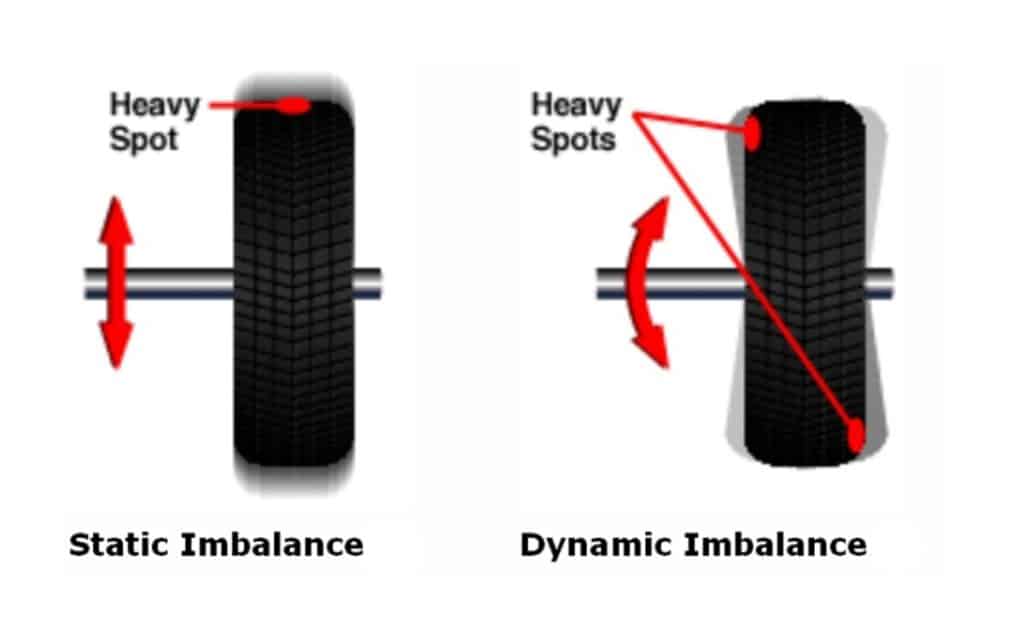
Example of a tire manufactured since 2000 with the current Tire Identification Number format:
DOT U2LL LMLR 5107 Manufactured during the 51st week of the year, in 2007 While the entire Tire Identification Number is required to be branded onto one sidewall of every tire, current regulations also require that DOT and the first digits of the Tire Identification Number must also be branded onto the opposite sidewall. Therefore, it is possible to see a Tire Identification Number that appears incomplete and requires looking at the tire’s other sidewall to find the entire Tire Identification Number
The use of a partial Tire Identification Number on the one sidewall (shown above) reduces the risk of injury to the mold technician that would have to install the weekly date code on the top sidewall portion of a hot tire mold.

Another thing to note when getting new tires or checking your old is that all four tires will most likely not be the exact same age. On a previous set of tires I purchased, I found that three of my new tires were made in the second week of 2008, while the fourth was made in the 21st week. Had any of my tires been manufactured more than a year prior to my date of purchase, I would have taken them back immediately and demanded a refund. When checking the age of your tires, check all four tires.
My Tires Don’t have a Code on Them!If you do not see a manufacturing code on your tire, grab a flashlight and slide underneath your car to check the other side. Tire manufacturers want to make it as hard as possible for you to determine your tire’s age, so they’ve inconveniently placed the manufacture date on only one side of your tires.
Why Do Tire Companies Hide the Tires Manufacture Date?Because they can and it’s profitable to do so. In many other countries, government works for consumers a little harder on their rights. In the good ole’ USA, big business lobbies against consumer rights and quite often wins. Why would the big tire manufactures want to pull their tires off the shelf to be destroyed?
In many other countries, government works for consumers a little harder on their rights. In the good ole’ USA, big business lobbies against consumer rights and quite often wins. Why would the big tire manufactures want to pull their tires off the shelf to be destroyed?
Take a peek at this very informative video from ABC’s 20/20, in which a hidden video camera was used in tire stores. Some retailers were helpful and informed, others not so much. Some retailers were selling tires as old as 12 years! You have to wonder how much of this is corporate mandate versus ignorance.
It pays to be an informed consumer, both in terms of finance and safety. If you’ve bought old tires recently, hopefully you have save your receipts. Go back to the place you purchased from and see if they’ll swap newly manufactured tires (or demand it). If that doesn’t work, you should at least be able to get a credit towards new tires.
Related Posts:
Thanks! Check your inbox (& spam folder) in a minute for your welcome email!
Oops... Please try again.
For many motorists, the tire parameters indicated on the sidewalls are akin to the Stirlitz code in the Center - nothing is clear. But for the correct selection of wheels, you need to be able to read these designations and understand their meaning. Tire manufacturers' catalogs and online selections make life easier, but they are not without errors and do not contain all the information. To understand the automotive "shoes" and choose tires yourself, you will have to decipher their markings. Our cheat sheet is here to help. nine0003
Our cheat sheet is here to help. nine0003
Tire size code
As with choosing your own boots, the first step in choosing your tires is size. But if we know the exact size of the foot, then there may be several tire sizes recommended by the manufacturer. You can find them in the car manual or on the tire pressure sticker on the door pillar, in the Tire Size column. nine0003
The format XXX / YY RZZ, familiar to most drivers and the most common in the world (where XXX is the tire width, YY is the profile height, ZZ is the rim diameter) is called European or metric , although it is only partly so. Let's analyze the metric format using the example of the dimension 185/65 R15 .
185 - the first digit of the dimension is the width of the tire in millimeters.
65 - the second digit indicates the profile height tires as a percentage of width. In our example, 65% of 185mm is 120mm. The profile height in percent is another surprise for novice motorists: after buying non-standard tires, you can suddenly find out that the dimension 195/65 R15 is not only wider than the standard 185/65 R15, but also higher. After all, 65% of 195 mm is no longer 120 mm, but almost 127! Although formally the profile of both tires is the same, the 65th.
If the profile height is 80–82% of the width, then it is often not indicated in the dimensions, marking the tire in the format XXX RZZ, without a fraction (for example, 185 R15). These tires are called full profile . Usually they are used on light trucks and vans when driving on bad roads at low speeds. Learn more about the effect of profile height on handling.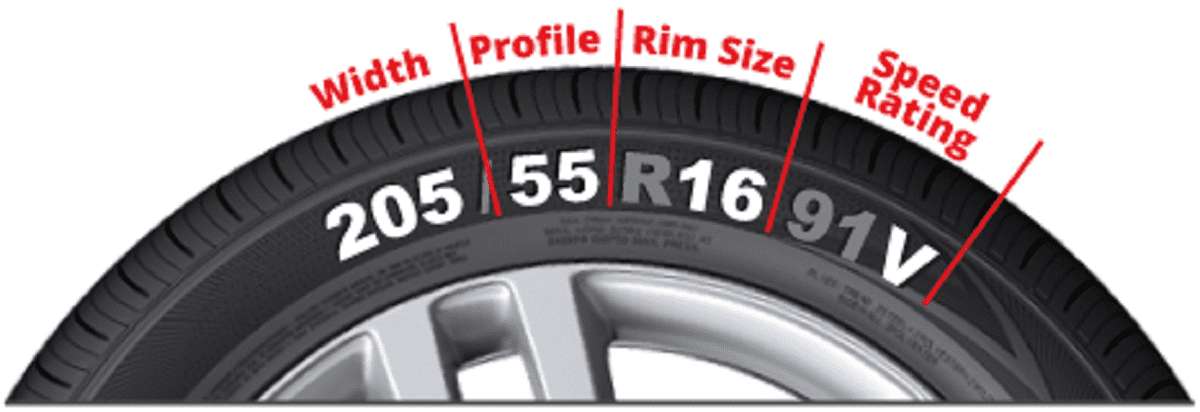
Diagonal full profile stowage T 135/80 D17.
R - the letter familiar to drivers in the dimension of the wheel does not mean the radius, as many people think, but radial (Radial) tire carcass design. Such wheels are now the majority, but there are also tires of a diagonal (Diagonal) design - for low-speed special equipment and heavy trucks. Often, spare wheels-stowaways of passenger cars are diagonal. Bias tires are marked with the letter D instead of R (for example, 135/80 D17) - you can’t drive fast on such tires. nine0003
15 - the last digit in the dimension indicates the bore diameter of the tire in inches (yes, inches in metric format). Of course, it must correspond to the diameter of the disk on which the tire is installed: putting R15 tires on the 16th “casting” will not work.
Inch tire size
There is another, less common size standard - the American or inch format is found on tires for SUVs. It looks like XX×YY RZZ, where XX is the full diameter of the tire, YY is the width of the tire, and ZZ is the diameter of the rim (all in inches). nine0003
It looks like XX×YY RZZ, where XX is the full diameter of the tire, YY is the width of the tire, and ZZ is the diameter of the rim (all in inches). nine0003
The American format is simpler and more logical than the European one, although it is unusual for us. There are no percentages in it and the height (full diameter) of the entire wheel is immediately visible, while in the European format it must be calculated separately. For example, a 31x10.50 R15 tire is 31 inches high, 10.5 inches wide, and has a 15″ bore. For comparison, to find out the height of a tire in European dimension format, you first need to calculate the profile (taking a percentage of the width), multiply by two and add the diameter of the wheel, remembering to convert it from inches to millimeters. It is impossible to do all this in the mind. nine0003
35×12.50 R18 LT off-road tire.
To convert dimensions from one format to another, a tire calculator is usually used. There are dozens of them on the Internet, but some contain errors.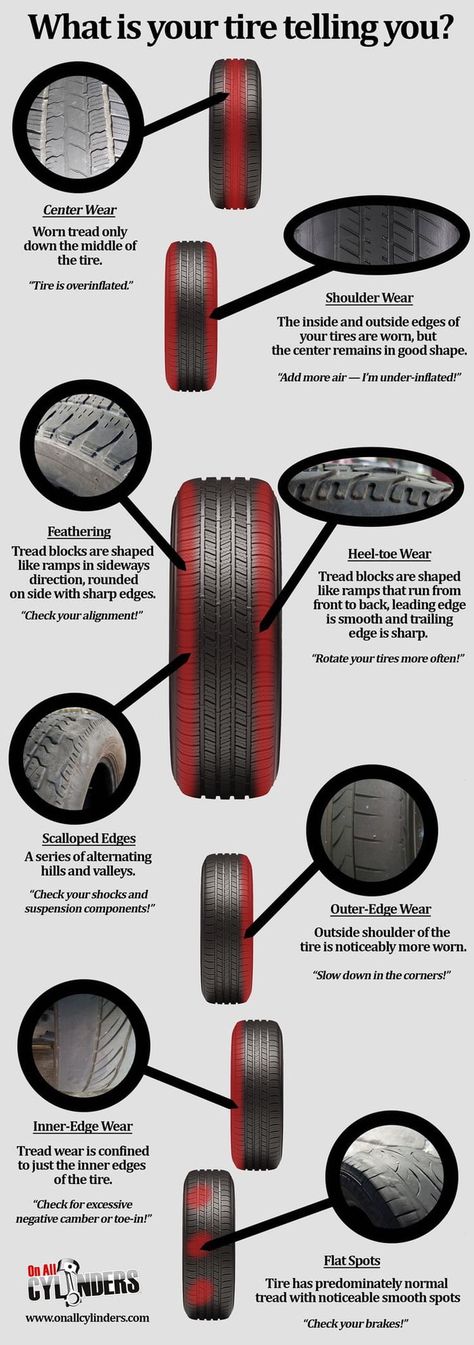 Before using the tire calculator, it is better to recalculate a couple of dimensions manually and compare the results. For reference: 1 inch is 25.4 millimeters.
Before using the tire calculator, it is better to recalculate a couple of dimensions manually and compare the results. For reference: 1 inch is 25.4 millimeters.
Tire codes
In addition to the numbers, in the tire dimension you can find not only the familiar letter R, but also other symbols, which, as a rule, speak about the purpose of the tire. In the table, we have collected the most common options for additional letter designations for car tires. nine0003
| Tire codes | |||||
|---|---|---|---|---|---|
| Symbol | Examples | Description | Symbol | Examples | Description |
| LT | nine0002 185/65 R15 LT LT 185/65 R15 | Light Truck, tire for light trucks and SUVs. | T | T 185/65 D15 | Temporary, temporary spare tire. |
| P | P 185/65 R15 | Passenger, passenger car tyre. | XL | 185/65 R15XL | Extra Load, reinforced tire with increased load capacity. |
| C | 185/65 R15 C | Commercial or Cargo, truck and van tire. | RF | 185/65 R15 RF | Reinforced, reinforced tire with extra plies. nine0003 |
| ST | ST 185/65 R15 | Special Trailer, tire for trailers and trailers. | ZR | 185/65 ZR15 | High speed tire for speeds over 240 km/h. |
Load and speed indices
Following the dimension on the sidewall of the tire, the permissible load and speed are indicated - of course, also in the form of "encryption", and not specific values. The load (carrying capacity) of the tire is indicated by a numerical index, and the speed is indicated by an alphabetic index. You can translate them into understandable indicators using special tables. nine0003
Ultimate load and speed are important parameters that affect both the safety and durability of rubber. Automakers prescribe the installation of certain tires based on the mass of the car, and the indices may be different depending on the dimension. Never set tires with a load capacity or speed below the recommended values!
| Tire load indexes | |||||||
| Index nine0106 | Load | Index | Load | Index | Load | Index | Load |
| 63 | 272 kg | 80 | 450 kg | 97 | 730 kg | nine0002 114 | 1180 kg |
| 64 | 280 kg | 81 | 462 kg | 98 | 750 kg | 115 | 1215 kg |
| 65 | 290 kg | 82 | 475 kg nine0106 | 99 | 775 kg | 116 | 1250 kg |
| 66 | 300 kg | 83 | 487 kg | 100 | 800 kg | 117 | 1285 kg |
| 67 | nine0002 307 kg | 84 | 500 kg | 101 | 825 kg | 118 | 1320 kg |
| 68 | 315 kg | 85 | 515 kg | 102 | 850 kg | 119 | nine0101 |
| 69 | 325 kg | 86 | 530 kg | 103 | 875 kg | 120 | 1400 kg |
| 70 | 335 kg | 87 | 545 kg | 104 | 900 kg | 121 | 1450 kg |
| 71 | 345 kg | 88 | 560 kg | 105 | 925 kg | 122 | 1500 kg |
| 72 | 355 kg | nine0101 580 kg | 106 | 950 kg | 123 | 1550 kg | |
| 73 | 365 kg | 90 | 600 kg | 107 | 975 kg | 124 | 1600 kg nine0106 |
| 74 | 375 kg | 91 | 615 kg | 108 | 1000 kg | 125 | 1650 kg |
| 75 | 387 kg | 92 | 630 kg | 109 | nine0002 1030 kg | 126 | 1700 kg |
| 76 | 400 kg | 93 | 650 kg | 110 | 1060 kg | 127 | 1750 kg |
| 77 | 412 kg | 94 | 670 kg | 111 | 1090 kg | 128 | 1800 kg |
| 78 | 425 kg | 95 | 690 kg | 112 | 1120 kg | 129 | 1850 kg |
| 79 | 437 kg | 96 | 710 kg | 113 | 1150 kg | 130 | 1900 kg |
| Subcompacts, cars | Crossovers, SUVs | ||||||
| Tire speed indices | ||||||||||||
| Index | M | N | P | Q | R | S | T | U | H | V | W | Y |
| Speed, km/h | 130 | 140 | 150 | 160 | 170 | 180 | 190 | 200 | 210 | 240 | 270 | 300 |
The load and speed indices can indirectly judge the strength of the tire, because high loads require a reinforced carcass and a harder rubber compound.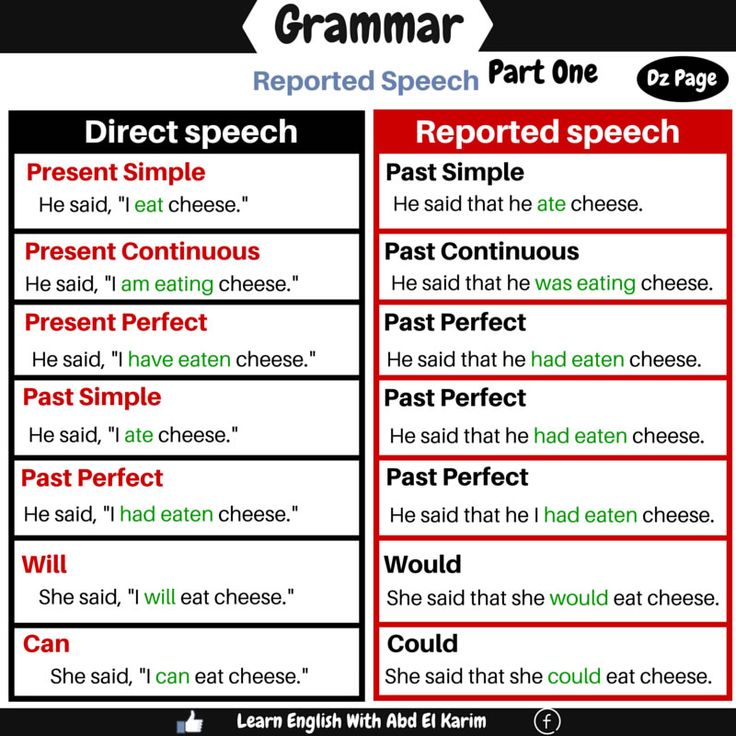
A reasonable question arises: is it worth putting tires with a higher maximum load or speed than the manufacturer recommends - so to speak, with a margin? For what purpose. If you often drive on bad roads, then tires with a high load index have a better chance of surviving the daily battle with pits than stock tires. But better handling or more efficient braking due to a high speed index cannot be achieved - they are not connected in any way. But the comfort and smoothness of the ride on stiffer high-speed tires will suffer significantly. If you drive around the city in civilian modes, then there is no point in buying high-speed tires with a truck load capacity - just stick to the recommended values. nine0003
Tire release date
As with most products, car tires are marked with the release date. Motorists often forget this when choosing wheels, although the age of the rubber is one of the key factors. Over the years, rubber dries out, losing elasticity, and outwardly this may not manifest itself in any way. After only 5 years of storage in a warehouse, a tire that has not even been ridden no longer fully corresponds to the parameters declared once. Therefore, the date of manufacture of the tire should be looked first of all - the fresher, the better. nine0003
After only 5 years of storage in a warehouse, a tire that has not even been ridden no longer fully corresponds to the parameters declared once. Therefore, the date of manufacture of the tire should be looked first of all - the fresher, the better. nine0003
The date of manufacture is printed on the sidewall of the tire in a separate oval box. Until 2000, a three-character code was used, but now these "walking dead" are no longer to be found. Since 2000, manufacturers have been marking tires with a four-digit code. The first two digits are the week of manufacture, the last two are the year. For example, a tire marked 1411 was produced in week 14 (i.e. April) of 2011 and is no longer worth driving today.
Tread wear indicators
All tires have TWI (Tread Wear Indicator) wear indicators - special jumpers in the tread grooves. To facilitate their search, symbols are applied to the sidewall of the tire indicating the location of the indicators: small triangles or arrows, sometimes with the inscription TWI, sometimes without.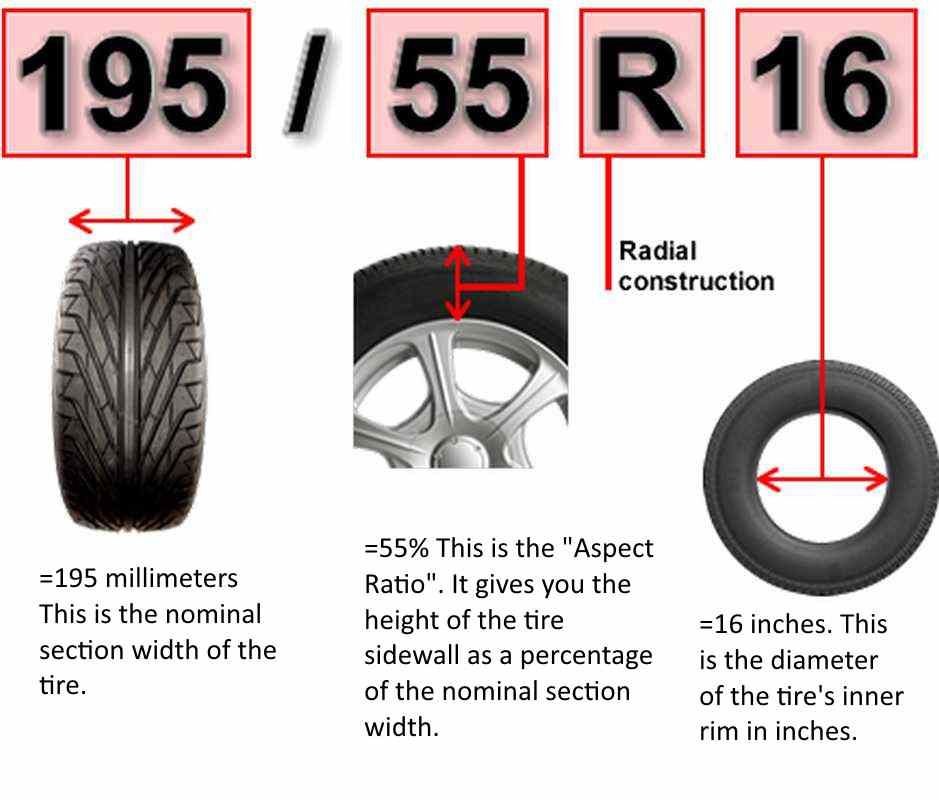
Keep in mind that the TWI indicator shows critical tread wear, not "50% wear" as used tire salesmen like to say. Once the rubber has worn down to the indicator, it's time to buy new tires. On winter tires, the indicators are located higher than on summer tires, since their allowable wear is noticeably less. nine0003
Run Flat Tires
Some tires have additional features, such as Run Flat technology, which allows you to run on flat tires. Reinforced sidewalls prevent the disc from damaging the tire: you can drive 100 km on the “rims” – it’s enough for a tire fitting. For many modern cars that do not have a spare tire, Run Flat tires are standard equipment.
The designation of Run Flat tires varies from manufacturer to manufacturer. Some brands label their tires RFT (Run Flat Tires), others ROF (Run On Flat), others just RF. More to come: RSC, ZP, ZPS, DSST, SSR, HRS, XRP, TRF, PAX, MOE, AOE are all run flat tire options. "Please, slow down, I'm recording!" By the way, there is an international symbol Run Flat, similar to a crawling snail, but almost none of the manufacturers use it. nine0003
nine0003
Tire mounting symbols
But not everything with tires is so complicated and confusing. For example, rubber with a directional or asymmetric tread pattern must have symbols for proper installation. This is a service label for tire shop employees - people who work with tires on a daily basis. And here it is generally accepted and intuitive!
A directional tire, in addition to the tread pattern directed forward, is issued by the inscription Rotation (rotation) on the sidewall and an arrow pointer. It indicates in which direction the wheel should rotate when the car moves forward. And on tires with an asymmetric tread there are inscriptions Outside (outer side) and Inside (inner side) - this is how you need to put rubber on the disc. As you can see, it's hard to go wrong.
However, nothing is impossible for roadside tire shops, and incorrectly fitted tires are sometimes found. A counter-rotating wheel loses efficiency and introduces an imbalance in the behavior of the machine. Be sure to check the correct installation of the tires according to the mounting symbols on the sidewalls.
Be sure to check the correct installation of the tires according to the mounting symbols on the sidewalls.
We hope that the tire designations have become a little clearer for you. Happy decryption! nine0003
Many drivers will have their own opinion on this matter. Some will focus on the requirements of the law, namely the minimum tread depth. Others will say that tires should not be used for more than five years, after which the rubber loses its properties and becomes "wooden". Still others will remember that they read about mileage limits ranging from 40 to 60 thousand kilometers. The fourth will operate only with the amount of money in the wallet. nine0003
There is, of course, a very desperate group of motorists. These guys drive to the last and erase the "meaty" tires to the state of a racing slick. Well, individual adepts can be seen rustling spikes on the asphalt in mid-July.
How do you like the rear tires of this Mitsubishi Galant? Whose approach is correct? There is no definite answer, except that the latter pose a serious danger both to themselves and to other road users. Almost all the remaining methods have some logic behind them. nine0003
Almost all the remaining methods have some logic behind them. nine0003
Driving with tires with less than the required tread depth is punishable by a fine. The police rarely pay attention to this, but it is worth keeping in mind the administrative responsibility. So, according to part 5 of article 590 of the Code of Administrative Offenses of the Republic of Kazakhstan, 5 MCI, or 13,890 tenge in 2020, will have to be paid to the treasury. Repeated violation within a year increases the penalty to 20 MCI (55,560 tenge).
The minimum residual tread depth is specified in clauses 5.6.1 and 5.6.2 of Appendix No. 7 TR TS 018/2011 "On the safety of wheeled vehicles". The text says that for passenger cars, the balance must be at least 1.6 mm for summer tires and at least 4 mm for winter and marked with signs: M + S, M & S and M S.
Note that measuring the tread depth with a ruler is an extreme step. Almost all modern tires have special wear indicators. As soon as they appear, the rubber should be replaced.
The average life of almost all tires from major manufacturers is 7-10 years, depending on their seasonality. True, such a duration should be expected if a number of operational requirements are met. These include driving on high-quality roads with optimal tire pressure, correctly set wheel alignment angles and a normally working suspension. nine0003
Tire age can be found by a special marker. The four digits enclosed in an oval (more often found on the inner sidewall) are the DOT marking, in a simple way, the production date. The first two digits indicate the week, and the last two indicate the year of production.
Any of the above parameters can significantly reduce the life of the rubber. For example, with insufficient pressure in the wheel, the side parts of the tread will wear off faster, with high pressure, its middle part. Violations in the geometry lead to uneven tire wear. nine0003 The middle part of the tread is worn more. The reason may be an excess of pressure in the wheel
The reason may be an excess of pressure in the wheel
How and where the rubber is stored is also an important factor. Manufacturers recommend a dry, cool and dark room.
In Kazakhstan, you should not count on more than five years of operation. Nevertheless, one set of wheels can really drive for about ten years. Whether it's worth it is a completely different question. From personal (almost) experience: tires manufactured in one of the CIS countries served from mid-2008 to spring 2018. The annual mileage of the car was small, about 10,000 km per year, including sorties on light off-road. The rest of the tread after all this time would have allowed the same amount of travel, but when one of the tires was removed for repair (the wheel was regularly flattened), the landing board literally crumbled. nine0003
Another benchmark for tire replacement is mileage. There are often recommendations on the Web that refer to GOST. Their text says: for passenger cars with a carrying capacity of up to two tons, the service life of tires is 45,000 kilometers.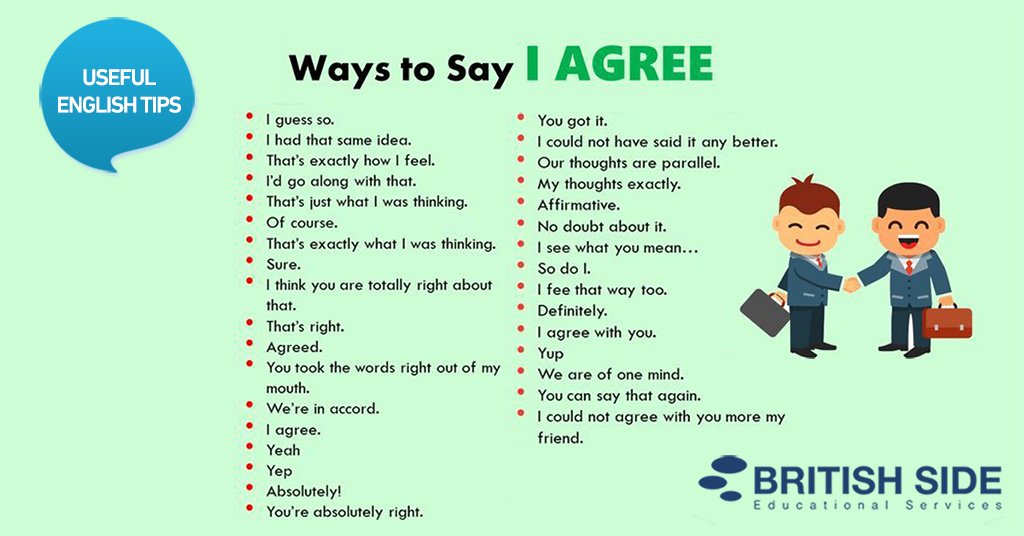
You can also find references to the operating mileage standards for vehicle tires approved by the Ministry of Transport of the Russian Federation. In them, the average service life varies from 40 thousand kilometers for Russian rubber to 60 thousand for foreign. Note that this document became invalid after the entry of the Technical Regulations of the Customs Union. nine0003
You can also determine how much a tire can run by using the Treadwear (TW) parameter, which indicates the tire wear index. He rarely receives attention. This figure is usually of interest to those who plan to operate the car in a sports environment. Soft and, accordingly, tenacious rubber has a fairly low TW, which racers are guided by.
Surely you have a reasonable question about how the wear resistance index correlates with mileage. TW appeared thanks to the specialists of the National Highway Traffic Safety Administration (NHTSA). To calculate it, the tire at the test site is compared with a special sample, the TW of which is already known. nine0003
nine0003
According to the methodology, the TW100 is equivalent to 48,000 mileage until the tires are completely worn out, that is, Nokian Hakka Green, for example, having a TW400, is capable of serving up to 192,000 kilometers. True, in the real world, wear is influenced by many factors that we talked about above, as well as driving style. Therefore, the results of calculations for TW are recommended to be divided by two. It turns out 96 thousand, or almost 5 years of operation, provided that in the warm season the car drives about 20 thousand kilometers.
Incorrect tire pressure can significantly reduce tire life. Don't forget to check itIn total, we have three parameters that should help with understanding how long tires will last if they are used correctly, and also tell you when to send a set of tires to the scrap and take care of buying new ones. This can be done on the Kolesa.kz portal using the search form in the "Spare Parts" section.
